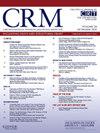Geographical and socioeconomic disparities in post-transcatheter aortic valve replacement pacemaker placement
IF 1.6
Q3 CARDIAC & CARDIOVASCULAR SYSTEMS
引用次数: 0
Abstract
Introduction
Pacemaker (PPM) implantation is indicated for conduction abnormalities which can develop post-transcatheter aortic valve replacement (TAVR). However, whether post-TAVR PPM risk is associated with the geographical location of the hospital and socioeconomic status of the patient is not well established. Our goal was to explore geographical and socioeconomic disparities in post-TAVR PPM implantation.
Methods
A retrospective cohort analysis was conducted using the National Inpatient Sample 2016–2020 with respective ICD-10 codes for TAVR and PPM implantation. A weighted multivariate logistic regression model was used to analyze prognostic outcomes.
Results
The number of patients hospitalized for undergoing TAVR was 296,740, out of which 28,265 patients had PPM implantation (prevalence 9.5 %). Patients' demographics including sex, ethnicity, household income, and insurance were not associated with risk of post-TAVR PPM except age (OR 1.01, CI 1.07–12.5, p < 0.001). Compared to rural hospitals, urban non-teaching hospitals were associated with a higher risk of post-TAVR PPM (OR 2.09, 1.3–3.43, p = 0.003). Compared to New England hospitals (ME, NH, VT, MA, RI, CT), middle Atlantic hospitals (NY, NJ, PA) were associated with highest post-TAVR PPM risk (OR 1.54, CI 1.2–1.98, p < 0.001), followed by Pacific (AK, WA, OR, CA, HI), mountain (ID, MT, WY, NV, UT, CO, AZ, NM) and east north central US.
Conclusion
Patients' demographics including sex, ethnicity, household income, and insurance were not associated with the risk of post-TAVR PPM except for age. Compared to New England hospitals, Middle Atlantic hospitals were associated with the highest post-TAVR PPM risk followed by Pacific, Mountain, and East North Central US. Prospective studies with data on TAVR wait times, expertise of the interventional staff, and post-TAVR management and discharge planning are required to further explore the observed regional distribution of TAVR outcomes.
经导管主动脉瓣置换术后起搏器安置的地域和社会经济差异。
导言:植入起搏器(PPM)适用于经导管主动脉瓣置换术(TAVR)后可能出现的传导异常。然而,经导管主动脉瓣置换术后出现传导异常的风险是否与医院的地理位置和患者的社会经济状况有关,目前尚无定论。我们的目标是探索 TAVR 术后 PPM 植入的地域和社会经济差异:我们使用 2016-2020 年全国住院患者样本进行了回顾性队列分析,并分别对 TAVR 和 PPM 植入术进行了 ICD-10 编码。采用加权多变量逻辑回归模型分析预后结果:接受 TAVR 的住院患者人数为 296,740 人,其中 28,265 人接受了 PPM 植入术(发病率为 9.5%)。除年龄外,患者的性别、种族、家庭收入和保险等人口统计学特征与TAVR术后PPM风险无关(OR 1.01,CI 1.07-12.5,P 结论:TAVR术后PPM风险与患者的性别、种族、家庭收入和保险等人口统计学特征无关:除年龄外,患者的人口统计学特征(包括性别、种族、家庭收入和保险)与 TAVR 术后 PPM 风险无关。与新英格兰地区的医院相比,中大西洋地区的医院TAVR术后PPM风险最高,其次是太平洋地区、山区和美国东北部地区。需要进行前瞻性研究,收集有关 TAVR 等待时间、介入人员的专业知识以及 TAVR 术后管理和出院计划的数据,以进一步探讨所观察到的 TAVR 结果的地区分布。
本文章由计算机程序翻译,如有差异,请以英文原文为准。
求助全文
约1分钟内获得全文
求助全文
来源期刊

Cardiovascular Revascularization Medicine
CARDIAC & CARDIOVASCULAR SYSTEMS-
CiteScore
3.30
自引率
5.90%
发文量
687
审稿时长
36 days
期刊介绍:
Cardiovascular Revascularization Medicine (CRM) is an international and multidisciplinary journal that publishes original laboratory and clinical investigations related to revascularization therapies in cardiovascular medicine. Cardiovascular Revascularization Medicine publishes articles related to preclinical work and molecular interventions, including angiogenesis, cell therapy, pharmacological interventions, restenosis management, and prevention, including experiments conducted in human subjects, in laboratory animals, and in vitro. Specific areas of interest include percutaneous angioplasty in coronary and peripheral arteries, intervention in structural heart disease, cardiovascular surgery, etc.
 求助内容:
求助内容: 应助结果提醒方式:
应助结果提醒方式:


